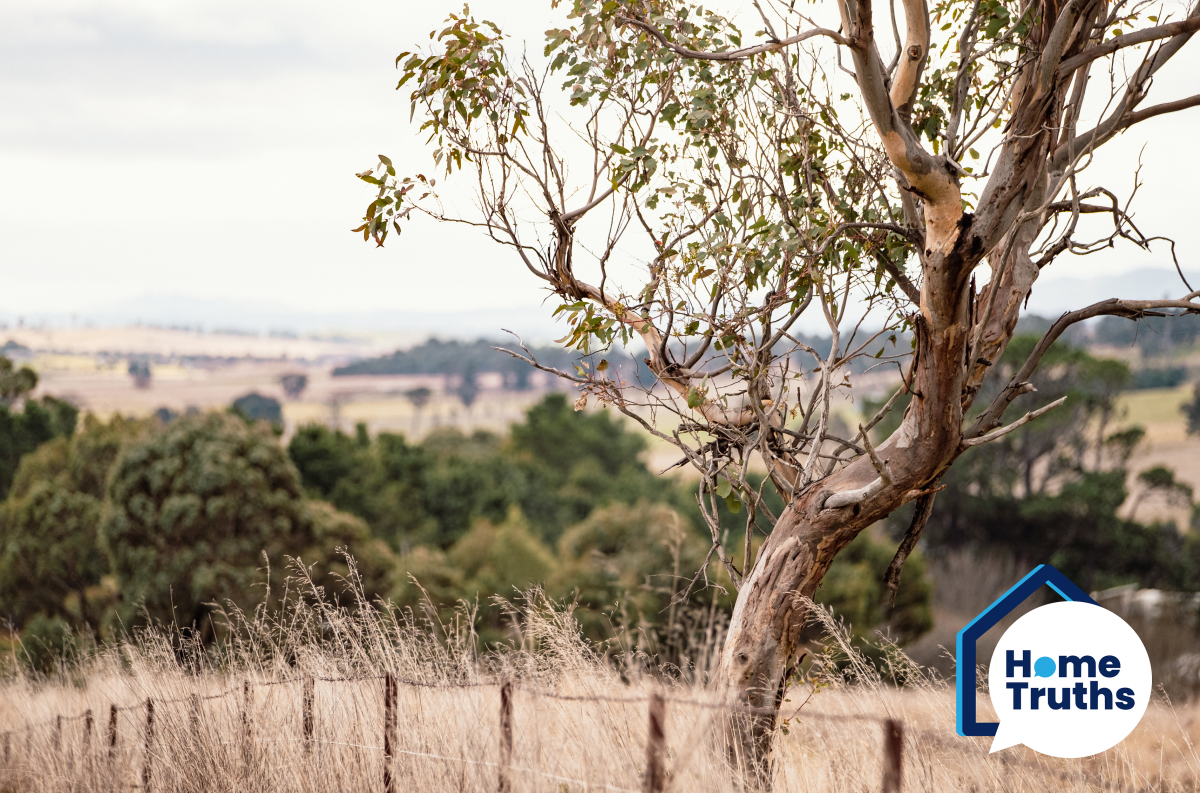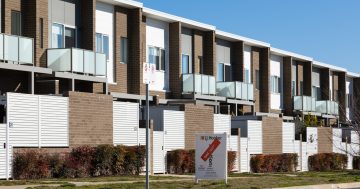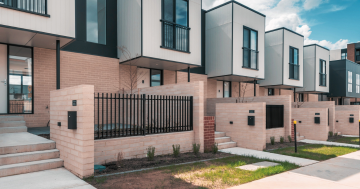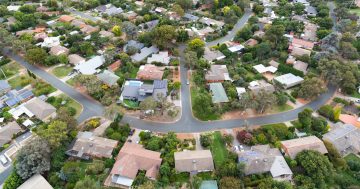
Woodbury Ridge is one development popping up as an urban fringe as buyers search for land outside Canberra. Photo: Supplied.
With the ACT Government’s tight grip on Canberra’s land supply, some developers are turning to NSW to provide more housing options for people willing to travel just that bit further.
But are these “urban fringes” the solution to our housing woes?
Woodbury Ridge is a new development in the village of Sutton, just 15 minutes drive to Gungahlin’s town centre and 20 minutes to the city.
It’s a joint venture between Kenyon Services and Capital Plus One, with development team member Andrew Cook saying chronic undersupply of land in Canberra was sending buyers over the border.
“There’s no silver bullet to this problem, but the shortage of greenfill land and at times oversupply of high-density apartments [hasn’t helped],” he said.
“Developments like ours show it’s possible to have land near Canberra and also walk your kids to school, have that rural lifestyle, ultimately at a better price point.”
A trained economist, Mr Cook said while high-density buildings were more affordable, he felt the incentives hadn’t necessarily been created for people to make them their homes.
“We’re getting the supply, but the demand is not there,” he said.
“Even those apartments in Canberra’s more vibrant areas, you look at the retail on ground level and they’re struggling, people aren’t staying.”
Mr Cook said apartments as an affordable option for first homebuyers was great in theory but, due to oversupply, prices weren’t increasing in a way that allowed people to buy houses as their lives grew.
“It works in reverse as well,” he said. “Boomers are occupying large homes in areas more appropriate for large families but there’s very little incentive for them to downsize.”
One risk with urban fringes was that the infrastructure may not exist, however developers were becoming more aware and were creating amenities that would attract people to the area and increase the value of the land.
In a perfect world, Mr Cook said paying for such infrastructure would be a joint venture between all interested parties.
“We can no longer pass the buck from one to the other and say ‘it’s your problem not mine’,” he said.
“In a perfect world we’d upgrade everything before people move in, but in reality that’s not a fully viable way to do it. So the developer can look into road upgrades and access, but more arterial ones sit with local government.
“Personally I think we all have a vested interest in delivering a good outcome, and finding that balance, because it ultimately benefits not just the developer but the wider community.”
There’s also another option to help our housing crisis.
Planning Institute of Australia ACT President Trevor Fitzpatrick said Canberra had been following the concept of the “15-minute city” where everything could be accessed within a drive of that length. That’s why places such as Tuggeranong and Belconnen were designed around their own town centres.
But he said there was a land resource we currently weren’t allowed to capitalise on – our own backyards.
“Look around the suburbs, a vast majority of it is just single detached dwellings on big blocks of land … certainly we’d advocate those suburbs can accommodate lots more dwellings,” Mr Fitzpatrick said.
But current planning laws don’t allow unit titling for dual-occupancy on most blocks in suburban residential areas.
“So if you’re a developer, you’d build two [houses on the land] and have to sell them together, and nobody wants to buy two in one,” Mr Fitzpatrick said.
“In the suburbs, which is the old urban fringe if you like, we’ve got mums and dads who’ve got an 800 square metre block who have been mowing the spare 400 sqm for the last 20 years, the kids have left home … they’ve got a land asset there worth hundreds of thousands of dollars.
“If they could [divide the land and build a home] they’re essentially downsizing the exact dwelling they’ve been living in for the past 30 years, because all they did was effectively sell their backyard.”
For those who lamented shrinking backyards, Mr Fitzpatrick pointed out the way we interact with our homes and communities has changed.
“In greenfill, we’re not creating 800 sqm blocks, we’re creating those 400 sqm blocks anyway,” he said.
“Because we’re 30 per cent or more open space in Canberra, you just have to jump out with the neighbours and go down the street rather than play in your backyard.”
He said towns had developed 30 to 40 years ago with the concept that mothers were staying at home with their children, which had shifted in recent times.
Now, instead of meeting up in our homes, people were more inclined to meet up at coffee shops or parks, which negated the need for larger backyards.
This is known as the “missing middle”, which we’ve overlooked as we’ve focused on higher-density housing or moving outwards to have low density housing.
“It’s not just dual occupancies but townhouses and developments around centres where two or three houses could be replaced by half a dozen townhouses,” he said.
Mr Fitzpatrick agreed with Mr Cook that the approach to high-density housing also needed to be improved.
“If we’re going to put more people into more confined spaces through higher density, we need to acknowledge the public parks and spaces we’ve currently got need to serve a totally different purpose to when they were first established,” he said.
To pay for further improvements to our inner-city open spaces, he also had a suggestion.
Mr Fitzpatrick said the ACT Government had a “lease variation charge” on land being changed by developers. At the moment, that money was seen as a tax to be used as general revenue.
Mr Fitzpatrick suggested the money would be better spent to improve communities where developers were putting up new dwellings.
“If two or three dwellings are being turned into 20 or 30 apartments, therefore the public spaces in that neighbourhood have changed in what they need to do, so that charge should be spent fixing up that park or fixing a footpath or planting trees,” he said.
“If you gave the developer the choice of paying [for example] $1 million in lease variation charges or spending $1 million improving an area, I’m sure they’d say yes [to the second option] every time because they know it’s going to have a benefit to them as well from a marketing perspective.”




















